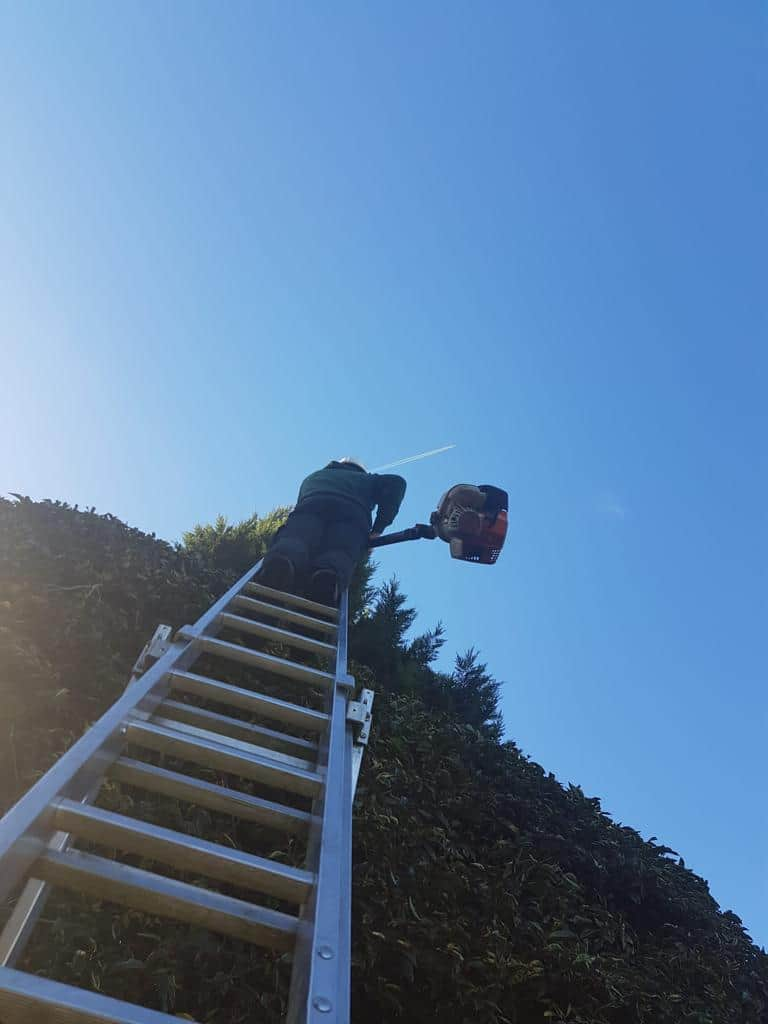Trees, much like any living organism, are susceptible to illness and environmental stress. When disease begins to take hold, timely intervention can make the difference between recovery and decline. One of the most effective methods for helping diseased trees regain strength is crown reduction. At NS Tree Surgery Camberley, we often recommend crown reduction to clients across Camberley, Surrey, as part of a tailored care plan designed to restore tree health while maintaining safety and aesthetic appeal.
Understanding Crown Reduction
Crown reduction involves carefully trimming the upper and outer branches of a tree’s canopy to decrease its overall height or spread. Unlike aggressive cutting or topping, crown reduction focuses on maintaining the tree’s structure and health by removing only specific branches that are weak, diseased, or overextended.
This technique is especially beneficial for trees recovering from infection, as it helps redirect the tree’s energy from supporting damaged or diseased areas to encouraging healthy new growth.
How Disease Affects Tree Health
Tree diseases can be caused by a variety of factors — including fungi, bacteria, insects, and environmental stress. Common signs of disease include:
- Wilting or discoloured leaves
- Dead or brittle branches
- Fungal growths or oozing sap
- Cracked or damaged bark
- Reduced foliage density
If left untreated, these symptoms can quickly worsen, spreading throughout the canopy and compromising the tree’s stability. This is where professional intervention from NS Tree Surgery Camberley becomes essential.
The Role of Crown Reduction in Disease Recovery
1. Removing Infected and Dead Wood
Crown reduction allows for the targeted removal of branches affected by disease. By eliminating infected wood, the spread of pathogens is halted, preventing further contamination of healthy tissue. This also improves airflow and sunlight penetration, creating a less hospitable environment for fungi and pests.
2. Reducing Stress on the Tree
When trees are diseased, their energy reserves are often depleted. A heavy or unbalanced canopy puts additional strain on the trunk and roots, making recovery more difficult. Reducing the crown’s size lightens the overall load, allowing the tree to focus its resources on healing and producing new, healthy growth.
3. Encouraging New Growth
Healthy regrowth is vital for a tree’s long-term recovery. Crown reduction stimulates the development of strong new shoots by improving the distribution of nutrients and light throughout the canopy. This helps the tree regain its natural shape and resilience over time.
4. Improving Airflow and Light Penetration
Dense, overcrowded canopies create shaded, moist conditions that encourage fungal infections. By selectively thinning the crown, more light and air can circulate through the branches. This not only aids in drying out damp areas but also enhances photosynthesis, giving the tree the energy it needs to recover.
5. Enhancing Structural Stability
Disease often weakens the integrity of branches, increasing the risk of breakage during storms or high winds. Crown reduction helps redistribute weight evenly across the tree’s structure, improving balance and reducing the likelihood of failure.
Why Professional Expertise Is Essential
Crown reduction is not a simple trimming exercise — it requires a deep understanding of tree biology, growth patterns, and disease management. Incorrect cutting can cause long-term damage, leaving the tree vulnerable to decay or further infection.
At NS Tree Surgery Camberley, we use professional equipment and scientifically informed techniques to ensure every reduction cut supports the tree’s health. Our arborists assess the extent of disease, determine which branches to remove, and ensure the canopy retains its natural shape and function.
Long-Term Benefits of Crown Reduction
Regular maintenance through crown reduction not only assists in disease recovery but also helps prevent future problems. The process enhances the tree’s appearance, reduces the likelihood of structural failure, and promotes a balanced canopy that can withstand harsh weather.
Additional benefits include:
- Improved air quality and sunlight exposure for surrounding plants.
- Lower risk of deadwood falling near property or pathways.
- Stronger resistance to pests and decay.
Crown reduction should be viewed as part of a comprehensive tree care strategy — one that prioritises long-term stability and ecological value.
When to Schedule a Crown Reduction
Trees recovering from disease should be evaluated and treated during periods of active growth, typically spring or early summer. This allows them to heal efficiently and produce new foliage quickly. However, the optimal timing can vary depending on the tree species and the nature of the infection.
If you notice any signs of decay, deadwood, or structural imbalance, it’s best to contact professionals like NS Tree Surgery Camberley for a thorough assessment. Early intervention greatly increases the chances of successful recovery.
Conclusion
Crown reduction is an essential technique for helping trees recover from disease, combining precise pruning with a focus on long-term health and safety. By removing diseased wood, improving airflow, and reducing canopy stress, it gives trees the best chance to heal and thrive once more. For expert crown reduction and comprehensive tree care in Camberley, Surrey, the experienced team at NS Tree Surgery Camberley is committed to restoring balance, strength, and vitality to your trees through safe and professional arboricultural practices.
Call us on: 01276 535 693
Click here to find out more about NS Tree Surgery Camberley
Click here to complete our contact form and see how we can help with your trees needs.

